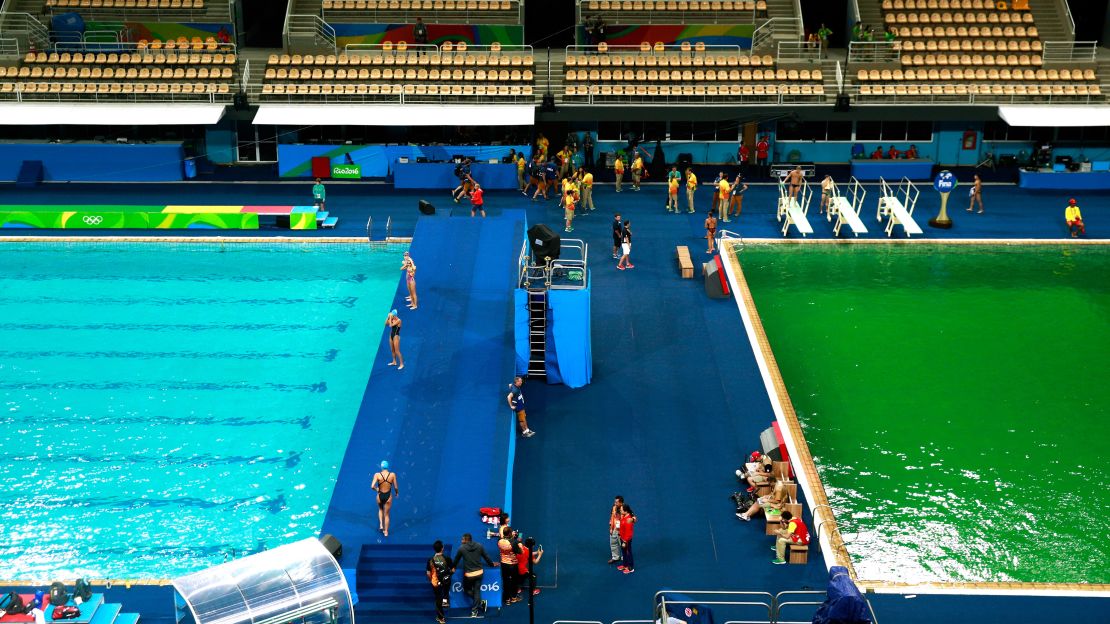Story highlights
We know swimming pools look funny when they're green, but why are they usually blue?
CNN asked a physicist and the explanation may surprise you
When two Olympic pools at Rio turned from azure blue to bright green earlier this week, people around the world were left scratching their heads.
Had someone put coloring in the water? Was their TV set broken?
Eventually some answers came. There had been a change in alkalinity in the water, said one official. Another blamed algae.

Meanwhile, FINA, the international governing body for swimming, said the water tanks had run out of water-cleaning chemicals.
With so many different answers, it’s about as clear as the water in the murky pools.
And there are even more questions with the Twitterverse pondering why swimming pools are usually blue.
The answer is not – contrary to popular assumption – that the color comes from the sky or the tiles on the bottom of the pool.
In fact, barring unfortunate events such as in Rio, pool water will always look blue because of the way light and water interact.
According to Dr Paul Coxon, a physicist from the University of Cambridge: “Sunlight is white and is made up of all the different colors of the spectrum.
“When you have a small volume of water, such as in a drinking glass, it looks colorless.
“You notice the blue effect when you have a large volume of water because of the way molecules are slightly absorbing light from the red end of the spectrum.
“Light is made up of red, green and blue, the whole spectrum, and we usually see them merged together.
“By taking out the red it means that the light that gets reflected from the water is slightly blue.”
The same thing happens even under artificial lighting, added Coxon, and the deeper the pool is, the bluer it will look.
The effect can be enhanced by the use of blue tiles in a pool, which designers tend to choose.
And finally – although Olympic officials insist the Rio pools are safe – pools tend to look bluer when they are free of any contaminating particles or debris.
“If you’ve got particles in the water they will scatter the light,” explained Coxon.



